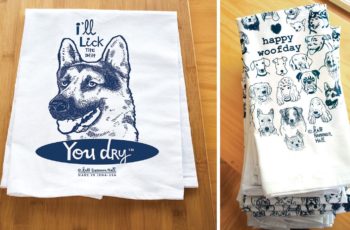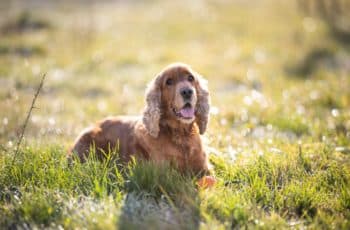You lace up your shoes, clip on the leash, and open the door. Your furry friend’s tail starts wagging uncontrollably. It’s time for a walk. But let’s be honest, sometimes walking the same route can become monotonous for both you and your dog. What if there was a way to add a little spice to your routine walks? Well, there is! By incorporating games into your walks, you can improve your dog’s mental and physical health and make your walks more enjoyable.
Before we dive in, it’s essential to remember that every dog is unique. What excites one might not interest another, and that’s okay. The key is to discover what your dog enjoys and use those preferences to create an engaging walk. So, let’s get started!
1. The Name Game

Let’s kick things off with a simple yet effective game: The Name Game. The idea is to make your dog’s name an exciting cue that grabs their attention. Start by saying your dog’s name in a cheery, engaging tone. When they turn to look at you, reward them with praise or a treat. The goal is to encourage your dog to check in with you frequently during your walks. It’s not only a fun game but also a great way to work on recall training.
Start this game at home, in a controlled environment, before taking it to the streets. Practice makes perfect, and soon your dog will be eagerly checking in with you, turning their walk into an engaging game of attention. Remember, patience and consistency are your best friends here.
As your dog gets more comfortable with the game, you can up the challenge. Try calling their name when they’re distracted by something interesting, like a squirrel or another dog. If they choose to check in with you instead of focusing on the distraction, throw a mini party for them! This game not only enriches their walks but also helps improve their focus and impulse control.
2. Find It! The Scavenger Hunt

The ‘Find it’ game is an excellent way to stimulate your dog’s natural hunting instincts. It involves hiding a toy or a treat and letting your dog find it. This game is not only fun but also encourages your dog to use its sense of smell, which is a vital part of their sensory perception.
Start by picking a favorite toy or treat. Make sure it’s something your dog is fond of and would be motivated to find. Then, when your dog isn’t watching, hide this item somewhere within the walking route.
Once you’re ready to start the game, let your dog lead you in the general direction of the hidden item but don’t make it too easy for them! Use phrases like ‘Find it’ to encourage your dog to start searching. When your dog finds the hidden treasure, celebrate their success.
Remember, the goal isn’t just to find the hidden item. It’s also about the journey and the excitement of the hunt. So, try to hide the item in places that would require your dog to sniff around and explore. Playing ‘Find it’ during walks not only adds a fun twist to the routine, but it also stimulates your dog’s mental abilities.
3. The Walking Weave

This game is a fun twist on walking: The Walking Weave. This game involves weaving in and out of obstacles during your walk, such as trees, lamp posts, or benches. Start by leading your dog around an object, rewarding them when they follow your path. Then, gradually increase the number of obstacles you weave around and the speed at which you do it.
The Walking Weave is not only fun but also a great way to work on your dog’s agility and responsiveness. Plus, it’s a fantastic method to teach them to follow your movements closely, making your walks together more interactive and enjoyable.
Remember to keep things positive and rewarding. If your dog seems confused or uninterested, take a step back and make the game easier. It’s not about how well they do—it’s about having fun and making their walks more enriching!
4. Hide and Seek
Hide and seek is a classic game that you can easily adapt for your dog. It’s a fun way to enhance your dog’s problem-solving skills and strengthen your bond. To begin with, make sure your dog knows the basic ‘stay’ command. If not, consider practicing this command before introducing the game. Once your dog has mastered ‘stay,’ it’s time to play!
Start the game in a familiar environment where your dog feels comfortable. This could be your backyard or a quiet section of a local park. Ensure there are plenty of hiding spots. You can use trees, benches, or even your picnic blanket to hide behind. The idea is to make it challenging enough for your dog, but not too hard that they lose interest. Instruct your dog to ‘stay’ and then go hide. Once you’re hidden, call out your dog’s name or use the ‘come’ command. If your dog finds you, reward them with treats or their favorite toy. This will motivate them to keep playing.
Hide and seek not only keeps your dog physically active but also provides mental stimulation. As your dog searches for you, they’re using their problem-solving skills and senses, particularly their sense of smell, which is a natural behavior for dogs. This game also helps reinforce obedience training, especially the ‘stay’ and ‘come’ commands.
5. Obstacle Course

Creating an obstacle course for your dog can turn a routine walk into an exciting adventure. You don’t need any fancy equipment for this. Use what’s available around you. A park bench can become a hurdle to jump over, a tree can be a pole to weave around, and a patch of grass can be the perfect spot for a command station where your dog needs to sit or lie down.
Start by walking your dog through the course, guiding them through each obstacle. Use treats or toys to motivate them along the way. Once your dog is familiar with the course, you can start encouraging them to navigate through it on their own, using commands and rewards.
Obstacle courses are a great way to provide both physical exercise and mental stimulation for your dog. They challenge your dog’s agility, coordination, and obedience. Moreover, they can be tailored to suit your dog’s abilities and preferences, making them a versatile game for dogs of all ages and breeds.
Another benefit of obstacle courses is that they can help improve your dog’s behavior. By following your commands through the course, your dog will learn to listen to you and follow your instructions, which can translate into better behavior at home. Plus, they’re just plain fun!
6. Sniffari

Sniffari is all about letting your dog’s nose lead the way. It’s not so much a ‘game’ in the traditional sense, but more of an enriching experience for your dog. To set up a sniffari, all you need is a leash and your dog’s favorite walking spot.
During a sniffari, let your dog take the lead. Allow them to stop and sniff wherever they want. If they want to spend five minutes sniffing a single tree, let them. The only rule is to let them explore at their own pace.
Sniffing is a natural and essential behavior for dogs. It’s how they gather information about their environment. Allowing your dog to sniff to their heart’s content can greatly enhance their mental stimulation.
Sniffari walks can also help reduce anxiety and stress in dogs. Sniffing is a calming activity for dogs, so allowing them to engage in this behavior can help them relax. Plus, it can make walks more enjoyable for dogs who may not be as physically active or who may be getting older.
See also

7. Speed Up, Slow Down, Turn Around
‘Speed Up, Slow Down, Turn Around’ is a game that introduces variety into your dog’s walking pace and direction. This game requires no props or preparation – just you, your dog, and a sense of adventure!
Initially, start your walk at a normal pace. Then, randomly increase your speed, encouraging your dog to keep up. After a while, slow down, allowing your dog to adjust to the new pace. Similarly, change your direction randomly to keep things interesting for your pup.
Playing ‘Speed Up, Slow Down, Turn Around’ is all about unpredictability. The sudden changes in speed and direction keep your dog guessing and engaged. Remember to celebrate your dog’s adaptability and enthusiasm with praises and rewards.
Playing this game during walks is a great way to keep your dog mentally stimulated and physically active. The sudden changes in pace and direction make the walk more interesting for your dog and encourage them to stay focused on you. Moreover, it’s a fun way to incorporate some additional exercise into your dog’s routine.
8. Bounce Back

‘Bounce Back’ is a game that reinforces recall training—teaching your dog to come back to you when called. It’s a simple yet effective game that can be played during walks without needing any special equipment.
The game starts with you calling your dog back to you. To spark their interest, you can use a favorite toy or treat as a lure. Once your dog reaches you, reward them, then release them to continue their walk.
As you continue with your walk, call your dog back to you at random intervals. Each time they ‘bounce back’ to you, reward them with a treat or a cuddle. This game is a fun way to ensure your dog is paying attention to you during the walk and is responsive to your calls.
Playing ‘Bounce Back’ not only encourages your dog to stay alert during walks but also strengthens their recall skills. This game is particularly useful in reinforcing positive behavior and ensuring your dog responds promptly when called. It also helps in maintaining a strong bond with your dog based on mutual trust and respect.
Conclusion
Walking our dogs is one of the joys of pet ownership. Walks are more than just a bathroom break for your dog – it’s a time for bonding, exploring, and exercising. By incorporating these games into your routine, you can transform your daily walks into an enriching experience that your dog looks forward to.
If you’re worried about using treats as rewards due to dietary restrictions, don’t worry! You can use your dog’s favorite toys or even pieces of their regular kibble. The goal is to make their walks more exciting and mentally stimulating, and you can achieve that with any item your dog values.
Remember, the primary goal of these games is to make walks fun for your dog. It’s not about how well they can find you or how fast they can complete the obstacle course. So, keep it light, reward your dog, and most importantly, enjoy the time spent with your furry friend.


